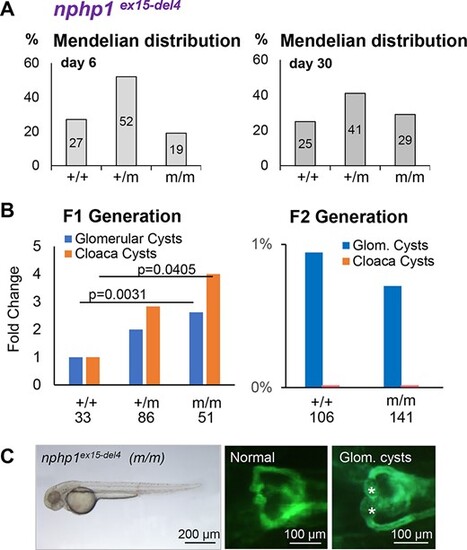Fig. 1
- ID
- ZDB-FIG-230517-7
- Publication
- Kayser et al., 2022 - Clock genes rescue nphp mutations in zebrafish
- Other Figures
- All Figure Page
- Back to All Figure Page
|
Characterization of nphp1-deficient zebrafish. (A) Exon 15 of zebrafish nphp1 was targeted by CRISPR/Cas9 to generate the nphp1ex15-del4 mutant zebrafish. Analysis at 6 and 30 days post fertilization revealed normal Mendelian distributions after incross of heterozygotic nphp1+/ex15-del 4 zebrafish, revealing that nphp1-deficient zebrafish is viable. The number of embryos per genotype is depicted inside the bars. (B) Heterozygote (+/m) and homozygote (m/m) mutants showed a progressive increase in glomerular and cloaca cyst formation in comparison with wild-type zebrafish (Fisher's exact test, two-tailed). However, the F2 generation of homozygote nphp1-deficient zebrafish [nphp1ex15-del4 (m/m)] did not develop more glomerular cysts or cloaca malformation in comparison with their wild-type siblings. The numbers displayed below the graph depict the group size. (C) While nphp1ex15-del4 (m/m) zebrafish embryos displayed a normal body axis, occasional glomerular cysts were detectable at 48 hpf. The asterisks (*) mark the glomerular cysts. |

